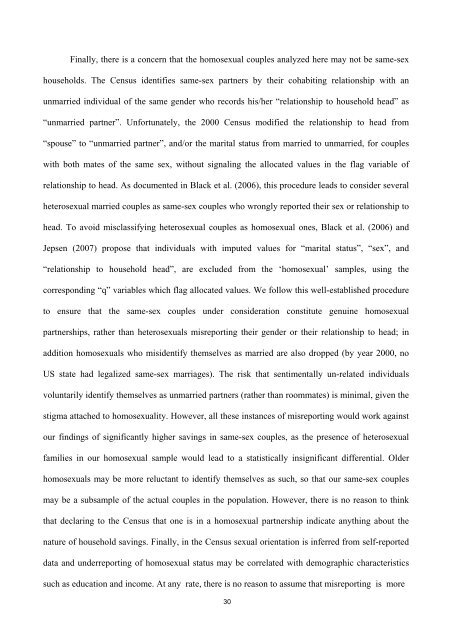Download PDF - Ivie
You also want an ePaper? Increase the reach of your titles
YUMPU automatically turns print PDFs into web optimized ePapers that Google loves.
Finally, there is a concern that the homosexual couples analyzed here may not be same-sex<br />
households. The Census identifies same-sex partners by their cohabiting relationship with an<br />
unmarried individual of the same gender who records his/her “relationship to household head” as<br />
“unmarried partner”. Unfortunately, the 2000 Census modified the relationship to head from<br />
“spouse” to “unmarried partner”, and/or the marital status from married to unmarried, for couples<br />
with both mates of the same sex, without signaling the allocated values in the flag variable of<br />
relationship to head. As documented in Black et al. (2006), this procedure leads to consider several<br />
heterosexual married couples as same-sex couples who wrongly reported their sex or relationship to<br />
head. To avoid misclassifying heterosexual couples as homosexual ones, Black et al. (2006) and<br />
Jepsen (2007) propose that individuals with imputed values for “marital status”, “sex”, and<br />
“relationship to household head”, are excluded from the ‘homosexual’ samples, using the<br />
corresponding “q” variables which flag allocated values. We follow this well-established procedure<br />
to ensure that the same-sex couples under consideration constitute genuine homosexual<br />
partnerships, rather than heterosexuals misreporting their gender or their relationship to head; in<br />
addition homosexuals who misidentify themselves as married are also dropped (by year 2000, no<br />
US state had legalized same-sex marriages). The risk that sentimentally un-related individuals<br />
voluntarily identify themselves as unmarried partners (rather than roommates) is minimal, given the<br />
stigma attached to homosexuality. However, all these instances of misreporting would work against<br />
our findings of significantly higher savings in same-sex couples, as the presence of heterosexual<br />
families in our homosexual sample would lead to a statistically insignificant differential. Older<br />
homosexuals may be more reluctant to identify themselves as such, so that our same-sex couples<br />
may be a subsample of the actual couples in the population. However, there is no reason to think<br />
that declaring to the Census that one is in a homosexual partnership indicate anything about the<br />
nature of household savings. Finally, in the Census sexual orientation is inferred from self-reported<br />
data and underreporting of homosexual status may be correlated with demographic characteristics<br />
such as education and income. At any rate, there is no reason to assume that misreporting is more<br />
27

















